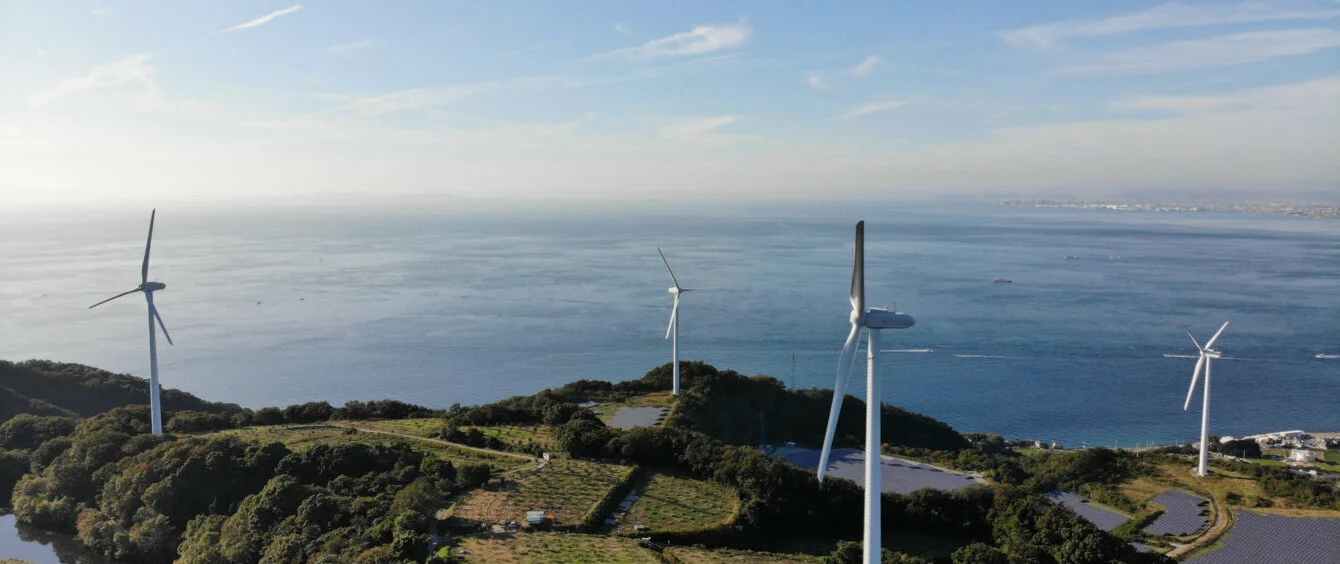Japan is one of the world’s biggest power users. Although the country ranks among the global frontrunners in terms of installed renewable capacity, it remains strongly dependent on imported fossil fuel. However, wind and solar energy are playing an increasingly important role in the Japanese energy mix, as evidenced by Fukushima Prefecture, for instance. The district intends to raise its renewables quota to 70 percent by 2030, thereby becoming a trailblazer within Japan.
A successful energy transition in Japan would bring the world closer to achieving the 1.5-degree goal, while improving various of the insular state’s socioeconomic indicators, as demonstrated by a recent analysis by the International Renewable Energy Agency (IRENA). The authors consider two scenarios: one involving stepping up activity in line with the 1.5-degree target, the other relating to Japan’s plans to pursue an energy transition through to 2019. The comparative analysis performed by the study highlights the benefits of the 1.5-degree scenario focussing on renewables.
Japan’s socioeconomic indicators
IRENA claims that Japan’s current socioeconomic challenges mainly consist of an income and wealth divide among the population, with the small share of women in the labour force and the shrinking rural demographic also posing a problem.
Local energy supply also exerts a significant influence on the country’s socioeconomic factors, with the population’s health and wellbeing leading the way. Japan is the world’s fifth-largest producer emissions from fossil fuel combustion. Besides the effects on the climate, this decreases local air quality in many areas, which can be detrimental to resident health and quality of life.
Goal: carbon neutral by 2050
As regards the energy transition, Japan has embarked on a course for the 1.5-degree target. In 2020, the government announced plans to make the nation carbon neutral by 2050. A year later, this quest was brought in line with the 1.5-degree goal aimed for worldwide. This means that Japan now seeks to scale back greenhouse gas emissions by 46 percent as opposed to the 29 percent originally envisaged compared to 2013
Japan’s renewable capacity has steadily increased in recent years. In 2020, the Asian nation boasted the world’s third-largest and seventh-largest installed solar and biomass capacity.
Share of renewables in Japan, 2010-2022
in per cent, source: Our world in dataHowever, the current administration headed by Prime Minister Kishida recently announced that the country intends to bank more on nuclear power to secure energy supply and build new nuclear power stations.
Affluence rises due to energy transition
The 1.5-degree scenario developed by the IRENA authors includes even more ambitious measures. On Japan’s trajectory towards carbon neutrality, they predominantly focus on readily available technologies – in particular the expansion of renewable energy sources, electrification measures, and increasing energy efficiency.
They claim that this would have a positive effect at various levels. For instance, stronger CO2 reductions would scale back local air pollution. And this would result in an increase in societal wellbeing, for example in terms of health, by roughly 12.6 percent by 2050 compared to the measure planned originally.
Improved economic development in 1.5-degree scenario
Moreover, the experts find that air quality would not be the sole benefactor of an ambitious 1.5-degree scenario. They also expect stronger growth in the economy. The average difference in gross domestic product between the two scenarios from 2021 to 2050 is approximately 6.3 percent. As Japan greatly depends on imported fossil fuel, the trade balance would improve by an estimated three trillion US dollars during the transitional period.
However, the IRENA 1.5-degree scenario concentrating on renewables achieves better results in terms of employment. Japan already has a very low jobless rate. An accelerated energy transition could expand the labour force by a further 1.6 million, mostly in the energy sector. These additional jobs would probably mainly be created in rural areas where renewable assets are built, and thus counteract migration to cities.
Change in society’s mindset and political framework needed
A comprehensive and ambitious energy transition focussing on renewable energy and decarbonisation as outlined in the study could help the island nation to reduce its dependency on imported fossil fuel while improving social welfare – without using more nuclear power. However, the experts are convinced that employing modern technologies alone will not be sufficient. They claim the need for a far-reaching change in mindset in various areas along with a wider political framework that supports the development.
